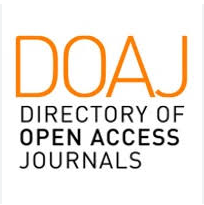Predictors of Customer Channel Choice in the High-Value Electronic Device Purchase Decision Process
Abstract
Difficulties and uncertainties in the customer journey reduce customer experience, while lower levels of uncertainty improve perceived control and trust, thereby increasing customer experience. Level of uncertainty experienced during the purchase decision may be related to the channel, product, or individual factors. The purpose of this study is to assess the relationships between the channel usage patterns of 415 online survey respondents and four hypothesized groups of predictors: demographic characteristics, the channel used by consumers in the earlier stages of the journey, shopping attitude and technological readiness (TR) factors during high-value electronic devices. Examining the channel usage preferences of the respondents, 6 types of patterns were identified, of which the 4 most frequently occurring patterns were retained in the further studies. A factor analysis was performed to reveal the close correlation between the explanatory variables compiled to measure the latent variables (within different dimensions of shopping attitude and TR). To identify the most significant explanatory variables multinominal logistic regression were used. In addition to the fact that all four groups of predictors contain factors that showed a measurable effect on the respondents' channel choice, it is important to highlight the effect of the need for physical touch and the channel used in the previous stage, which proved to be the strongest predictors. When evaluating our results, it should be noted that the four identified shopping pattern categories were represented in strongly different proportions in the sample, thereby significantly impairing the learning efficiency of the algorithm. Thus, our model can be considered applicable primarily to the "Blended" pattern category, which was overrepresented in the sample.
References
Állami Számvevőszék, 2022. Elemzés, A techipar, az e-kereskedelem, a magyar termékek kereskedelme és a kapcsolódó uniós szabályozásnak az elemzése [WWW Document]. URL https://www.asz.hu/dokumentumok/E2124_Techipar_e_ker.pdf (accessed 4.3.24).
Baird, N., Kilcourse, B., n.d. Omni-Channel Fulfillment and the Future of Retail Supply Chain 31.
Brashear, T.G., Kashyap, V., Musante, M.D., Donthu, N., 2009. A Profile of the Internet Shopper: Evidence from Six Countries. J. Mark. Theory Pract. 17, 267–282. https://doi.org/10.2753/MTP1069-6679170305
Chiu, H.-C., Hsieh, Y.-C., Roan, J., Tseng, K.-J., Hsieh, J.-K., 2011. The challenge for multichannel services: Cross-channel free-riding behavior. Electron. Commer. Res. Appl., Special Issue on Electronic Auctions: Strategies and Methods 10, 268–277. https://doi.org/10.1016/j.elerap.2010.07.002
Davis, F.D., Venkatesh, V., 1996. A critical assessment of potential measurement biases in the technology acceptance model: three experiments. Int. J. Hum.-Comput. Stud. 45, 19–45. https://doi.org/10.1006/ijhc.1996.0040
Dolbec, P.-Y., Chebat, J.-C., 2013. The Impact of a Flagship vs. a Brand Store on Brand Attitude, Brand Attachment and Brand Equity. J. Retail. 89, 460–466. https://doi.org/10.1016/j.jretai.2013.06.003
Frasquet, M., Miquel-Romero, M.-J., 2021. Competitive (versus loyal) showrooming: An application of the push-pull-mooring framework. J. Retail. Consum. Serv. 62, 102639. https://doi.org/10.1016/j.jretconser.2021.102639
Frow, P., Payne, A., 2007. Towards the ‘perfect’ customer experience. J. Brand Manag. 15, 89–101. https://doi.org/10.1057/palgrave.bm.2550120
Gentile, C., Spiller, N., Noci, G., 2007. How to Sustain the Customer Experience:: An Overview of Experience Components that Co-create Value With the Customer. Eur. Manag. J. 25, 395–410. https://doi.org/10.1016/j.emj.2007.08.005
Grewal, D., Gauri, D.K., Roggeveen, A.L., Sethuraman, R., 2021. Strategizing Retailing in the New Technology Era. J. Retail., Re-Strategizing Retailing in a Technology Based Era 97, 6–12. https://doi.org/10.1016/j.jretai.2021.02.004
Grewal, D., Roggeveen, A.L., Nordfält, J., 2017. The Future of Retailing. J. Retail., The Future of Retailing 93, 1–6. https://doi.org/10.1016/j.jretai.2016.12.008
Gu, J., Tayi, G., 2016. Consumer Pseudo-Showrooming and Omni-Channel Product Placement Strategies. https://doi.org/10.13140/RG.2.1.3880.8569
Hungary: e-commerce segment revenue 2017-2025 [WWW Document], n.d. . Statista. URL https://www.statista.com/forecasts/1312894/hungary-e-commerce-segment-revenue (accessed 8.31.22).
Iman Khalid A-Qader, Azizah Binti Omar, Mohammad Rabiul Basher Rubel, 2016. The Influence of Affective Brand Experience Dimension on Brand Equity of the Smartphone Millennial Users in Malaysia. Manag. Stud. 5. https://doi.org/10.17265/2328-2185/2017.01.003
Kang, J.-Y.M., Mun, J.M., Johnson, K.K.P., 2015. In-store mobile usage: Downloading and usage intention toward mobile location-based retail apps. Comput. Hum. Behav. 46, 210–217. https://doi.org/10.1016/j.chb.2015.01.012
Konuş, U., Verhoef, P.C., Neslin, S.A., 2008. Multichannel Shopper Segments and Their Covariates. J. Retail. 84, 398–413. https://doi.org/10.1016/j.jretai.2008.09.002
Lemon, K.N., Verhoef, P.C., 2016. Understanding Customer Experience Throughout the Customer Journey. J. Mark. 80, 69–96. https://doi.org/10.1509/jm.15.0420
Manser Payne, E., Peltier, J.W., Barger, V.A., 2017. Omni-channel marketing, integrated marketing communications and consumer engagement: A research agenda. J. Res. Interact. Mark. 11, 185–197. https://doi.org/10.1108/JRIM-08-2016-0091
Nguyen, A.T.V., McClelland, R., Thuan, N.H., 2022. Exploring customer experience during channel switching in omnichannel retailing context: A qualitative assessment. J. Retail. Consum. Serv. 64, 102803. https://doi.org/10.1016/j.jretconser.2021.102803
Parasuraman, A., Colby, C.L., 2015. An Updated and Streamlined Technology Readiness Index: TRI 2.0. J. Serv. Res. 18, 59–74. https://doi.org/10.1177/1094670514539730
Peck, J., Childers, T.L., 2003. Individual Differences in Haptic Information Processing: The “Need for Touch” Scale. J. Consum. Res. 30, 430–442. https://doi.org/10.1086/378619
Puccinelli, N.M., Goodstein, R.C., Grewal, D., Price, R., Raghubir, P., Stewart, D., 2009. Customer Experience Management in Retailing: Understanding the Buying Process. J. Retail., Enhancing the Retail Customer Experience 85, 15–30. https://doi.org/10.1016/j.jretai.2008.11.003
Quach, T.N., Thaichon, P., Jebarajakirthy, C., 2016. Internet service providers’ service quality and its effect on customer loyalty of different usage patterns. J. Retail. Consum. Serv. 29, 104–113. https://doi.org/10.1016/j.jretconser.2015.11.012
Rese, A., Schreiber, S., Baier, D., 2014. Technology acceptance modeling of augmented reality at the point of sale: Can surveys be replaced by an analysis of online reviews? J. Retail. Consum. Serv. 21, 869–876. https://doi.org/10.1016/j.jretconser.2014.02.011
Rodríguez-Torrico, P., San José Cabezudo, R., San-Martín, S., 2017. Tell me what they are like and I will tell you where they buy. An analysis of omnichannel consumer behavior. Comput. Hum. Behav. 68, 465–471. https://doi.org/10.1016/j.chb.2016.11.064
Santos, S., Gonçalves, H.M., 2019. Multichannel consumer behaviors in the mobile environment: Using fsQCA and discriminant analysis to understand webrooming motivations. J. Bus. Res. 101, 757–766. https://doi.org/10.1016/j.jbusres.2018.12.069
Schneider, P.J., Zielke, S., 2020. Searching offline and buying online – An analysis of showrooming forms and segments. J. Retail. Consum. Serv. 52, 101919. https://doi.org/10.1016/j.jretconser.2019.101919
Schul, Y., Mayo, R., 2003. Searching for certainty in an uncertain world: the difficulty of giving up the experiential for the rational mode of thinking. J. Behav. Decis. Mak. 16, 93–106. https://doi.org/10.1002/bdm.434
Stein, A., Ramaseshan, B., 2015. Customer Referral Behavior: Do Switchers and Stayers Differ? J. Serv. Res. 18, 229–239. https://doi.org/10.1177/1094670514563495
van Baal, S., Dach, C., 2005. Free riding and customer retention across retailers’ channels. J. Interact. Mark. 19, 75–85. https://doi.org/10.1002/dir.20036
Verhoef, P.C., Kannan, P.K., Inman, J.J., 2015. From Multi-Channel Retailing to Omni-Channel Retailing: Introduction to the Special Issue on Multi-Channel Retailing. J. Retail., Multi-Channel Retailing 91, 174–181. https://doi.org/10.1016/j.jretai.2015.02.005
Verhoef, P.C., Lemon, K.N., Parasuraman, A., Roggeveen, A., Tsiros, M., Schlesinger, L.A., 2009. Customer Experience Creation: Determinants, Dynamics and Management Strategies. J. Retail. 85, 31–41. https://doi.org/10.1016/j.jretai.2008.11.001
Verhoef, P.C., Neslin, S.A., Vroomen, B., 2007. Multichannel customer management: Understanding the research-shopper phenomenon. Int. J. Res. Mark. 24, 129–148. https://doi.org/10.1016/j.ijresmar.2006.11.002
Walsh, G., Mitchell, V.-W., 2010. The effect of consumer confusion proneness on word of mouth, trust, and customer satisfaction. Eur. J. Mark. 44, 838–859. https://doi.org/10.1108/03090561011032739
Wang, J., Wang, S., 2022. Revisiting the showrooming effect on online and offline retailers: The strategic role of in-store service. J. Retail. Consum. Serv. 66, 102884. https://doi.org/10.1016/j.jretconser.2021.102884
WebMa, 2022. E-commerce statisztikák és trendek 2022. WebMa Blog. URL https://blog.webma.hu/online-marketing/e-commerce-statisztikak-es-trendek-2022/ (accessed 4.3.24).


























